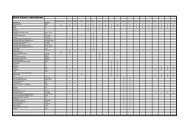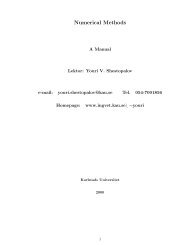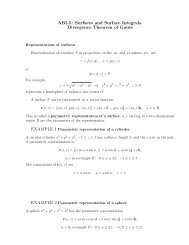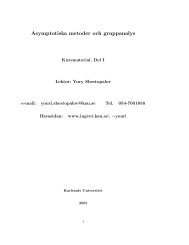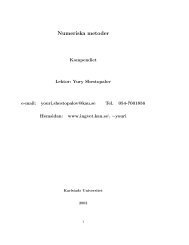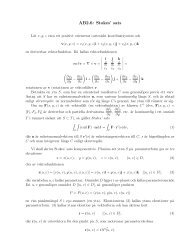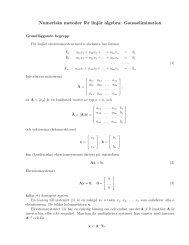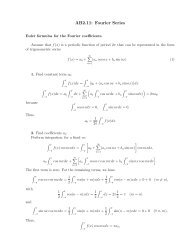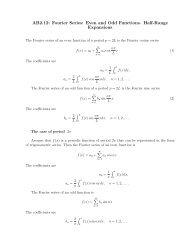Create successful ePaper yourself
Turn your PDF publications into a flip-book with our unique Google optimized e-Paper software.
Spaces L (1)2 and L (2)2 are (infinite-dimensional) Hilbert spaces with the inner products(f, g) 1 =(f, g) 2 =∫ 1−1∫1−1dxf(x)g(x) √ , 1 − x2f(x)g(x) √ 1 − x 2 dx.Let us define two more functional spaces of differentiable functions defined in the segment(−1, 1) whose first derivatives are square-integrable in (−1, 1) with the weights 1/ √ √ 1 − x 2 and1 − x2 :˜W 2 1 := {f(x) : f ∈ L (1)2 , f ′ ∈ L (2)2 },andŴ 1 2 := {f(x) : f ∈ L (1)2 , f ′ (x) √ 1 − x 2 ∈ L (2)2 };they are also Hilbert spaces with the inner productsand norms(f, g) ˜W 12=(f, g)Ŵ 12=∫1−1∫1−1dxf(x) √1 − x2dxf(x) √1 − x2‖f‖ 2˜W 1 =2 ∣‖f‖ 2 Ŵ 1 2=∣∫ 1−1∫1−1∫1−1∫1−1∫1dxg(x) √ + f ′ (x)g ′ (x) √ 1 − x 2 dx,1 − x2−1∫1dxg(x) √ + f ′ (x)g ′ (x) (1 − x 2 ) 3/2 dx1 − x2dxf(x) √ 1 − x2∣dxf(x) √ 1 − x2∣22++∫ 1−1∫1−1−1|f ′ (x)| 2√ 1 − x 2 dx,|f ′ (x)| 2 (1 − x 2 ) 3/2 dx.If a function f(x) is decomposed in the Fourier–Chebyshev series (327) or (328) and isan elemet of the space L (1)2 or L (2)2 (that is, integrals (331) and (332) converge), then thecorresponding series always converge in the root-mean-square sense, i.e.,‖f − S N ‖ 1 → 0 and ‖f − S N ‖ 2 → 0 as N → ∞,where S N are partial sums of the Fourier–Chebyshev series. The ’smoother’ function f(x) inthe segment [−1, 1] the ’faster’ the convergence of its Fourier–Chebyshev series. Let us explainthis statement: if f(x) has p continuous derivatives in the segment [−1, 1], then∣ f(x) − a 0N∑2 T 0(x) − a n T n (x)∣ ≤ C ln N , x ∈ [−1, 1], (333)n=1N pwhere C is a constant that does not depend on N.62



